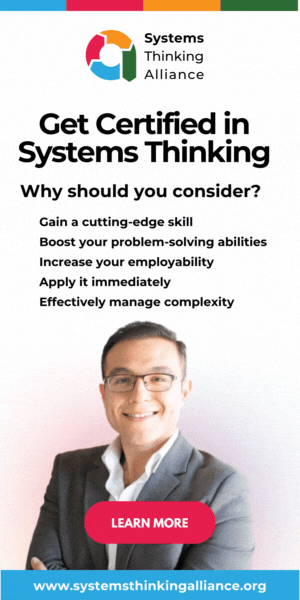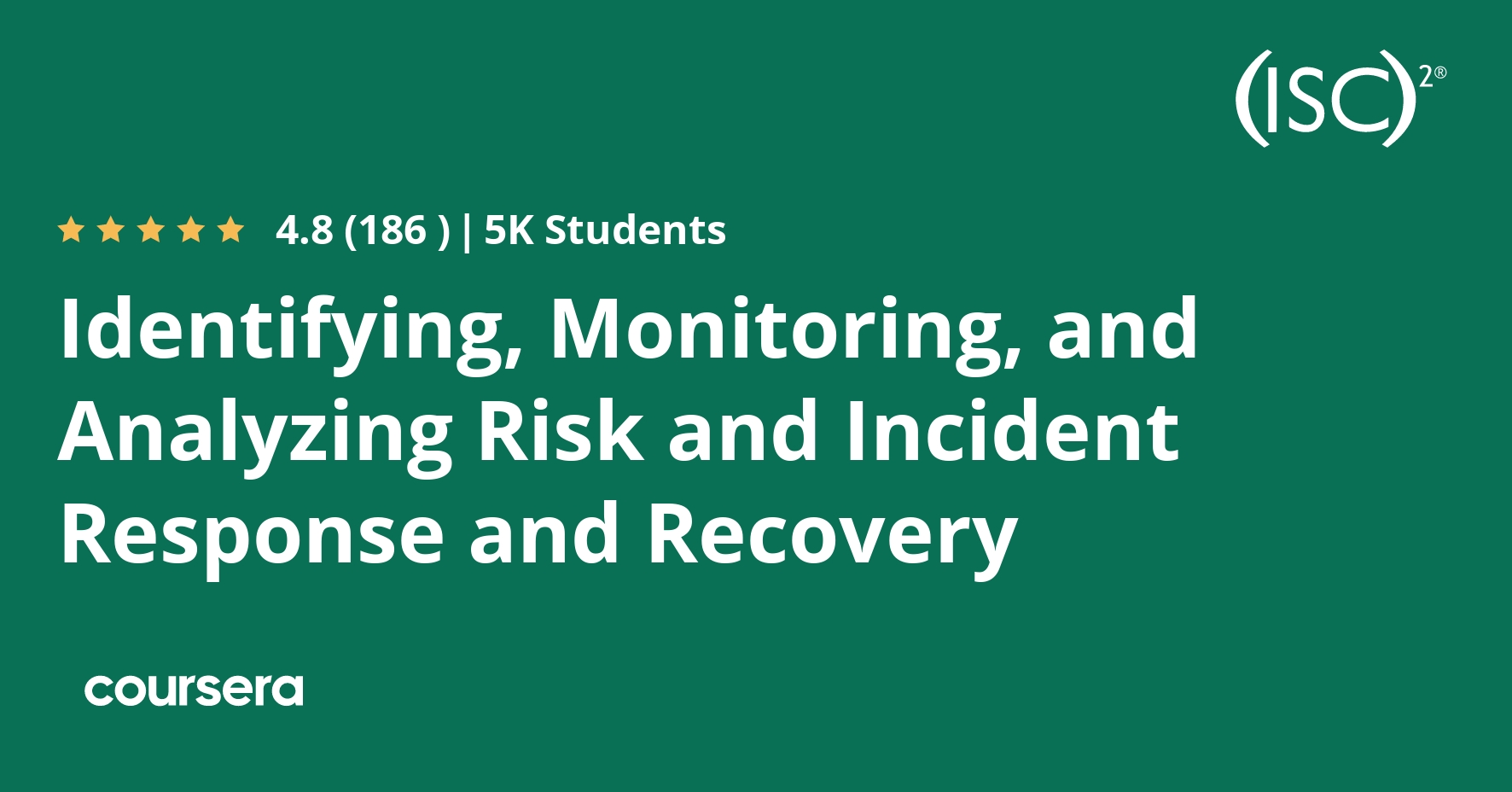Description
Risk Identification, Monitoring, and Analysis: In the Risk Identification, Monitoring, and Analysis session, you will learn how to identify, measure, and control losses associated with adverse events. You will review, analyze, select, and evaluate safeguards for mitigating risk.You will learn processes for collecting information, providing methods of identifying security events, assigning priority levels, taking the appropriate actions, and reporting the findings to the correct individuals. After collection of the details from monitoring, we can analyze to determine if the system is being operated in accordance with accepted industry practices, and in compliance with organization policies and procedures.
Incident Response and Recovery: In the Incident Response and Recovery Session, you will gain an understanding of how to handle incidents using consistent, applied approaches in order to resolve. Once an incident is identified, action will be necessary in order to resolve. We will examine processes such as damage recovery, data integrity and preservation, and the collection, handling, reporting, and prevention. You will be introduced to the Business Continuity Plan (BCP) and Disaster Recovery Plan (DRP) concepts and how they can be utilized in order to mitigate damages, recover business operations, and avoid critical business interruption. Through the use of the DRP, you will understand the procedures for emergency response and post-disaster recovery.
Course Objectives
1. Describe the risk management process
2. Perform security assessment activities
3. Describe processes for operating and maintaining monitoring systems
4. Identify events of interest
5. Describe the various source systems
6. Interpret reporting findings from monitoring results
7. Describe the incident handling process
8. Contribute to the incident handling process based upon role within the organization
9. Describe the supporting role in forensics investigation processes
10. Describe the supporting role in the business continuity planning process
11. Describe the supporting role in the disaster recovery planning process
What you will learn
Understand the Risk Management Process
Module Topic: Risk Visibility and Reporting, Risk management Concepts, Risk Assessment, Risk Treatment, Audit Findings. In Risk visibility and Reporting, you will learn about risk register, creating a risk register, risk register, and risk management steps. In Risk Management Concepts, you will learn about, key terms, and generic risk model with key factors – NIST SP 800-30 R1. In risk Assessment, you will learn about NIST SP 800- 30 R1 risk assessment methodology, Step 1. prepare for the assessment, Step 2. conduct the assessment, Step 2a. identify threat sources, step 2b. identify potential threat events, step 2c. identify vulnerabilities and predisposing conditions, step 2d. determine likelihood, step 2e. determine impact, step 2f. risk determination, risk level matrix, risk levels, step 3. communicating and sharing risk assessment information, step 4. maintaining the risk assessment, and risk assessment activity. In Risk Treatment, you will learn about, risk mitigation, example control: passwords, control selection, residual risk, risk transference, risk avoidance, and risk acceptance. In audit Findings, you will learn about auditors, types of audits, audit methodologies, auditor responsibilities, audit scope, documentation, and response to audit.
Perform Security Assessment Activities
Module Topics: Participate in Security and Test Results, Penetration Testing. In Participate in Security and Test Results, you will learn about vulnerability scanning and analysis, vulnerability testing software categories, vulnerability testing qualities, potential problems, host scanning, host security considerations, traffic types, security gateway types, wireless networking testing, potential security issues, searching for rogue access points, locking down the enterprise, wireless tools, war dialing, and war driving. In Penetration Testing you will learn about penetration testing modes, white box / hat, gray box / hat, black box / hat, phase 1: preparation, reporting, phase 2: reconnaissance and network mapping techniques, reconnaissance, social engineering and low-tech reconnaissance, whois attacks, DNS zone transfers, network mapping, network mapping techniques, firewalking, basic built-in tools, phase 3: information evaluation and risk analysis, phase 4: active penetration, phase 5: analysis and reporting, penetration testing high-level steps.
Operate and Maintain Monitoring Systems & Analyze and Report Monitoring Results
Module Topics: Events of Interest, Logging, source Systems, Security Analytics, metrics, and Trends, Visualization, Event Data Analysis, Communication of Findings. In Events of Interest you will learn about, monitoring terminology, Intrusion Detection System (IDS)/Intrusion Prevention System (IPS), comparing IDS and IPS, types of IDS/IPS devices, deploying HIDS and NIDS, implementation issues for monitoring, monitoring control, other considerations, sample questions to consider, collecting data for incident response, monitoring response techniques, attackers, attacker motivations, intrusions, events, types of monitoring, and file integrity checkers, continuous/compliance monitoring. In Logging, you will learn about reviewing host logs, reviewing incident logs, log anomalies, log management, clipping levels, filtering, log consolidation, log retention, centralized logging (syslog and log aggregation), syslog, distributed log collectors, hosted logging services, configuring event sources (s-flow, NetFlow, sniffer), Cosco NetFlow, What is an IP Flow, IP packet attributes, understanding network behavior, how to access the data produced by NetFlow, How does the router or switch determine which flows to export to the NetFlow collector server, format of the export data, sFlow, event correlation systems (security, information, and event management (SIEM)), SIEM functions, compliance, enhanced network security and improved IT/security operations, and full packet capture. In Source System, you will learn about comprehensive application, middleware, OS, and infrastructure monitoring, hyper capabilities, and operations manager. Analyze and Report Monitoring: In Security Analytics, Metrics, and Trends, you will learn about security baseline, network security baseline, metrics and analysis (MA), systems security engineering capability maturity model (SSE-CMM), and potential metrics. In visualization topic, you will learn about data visualization tools. In Event Data Analysis, you will learn about logs, log management, log management recommendations, and Potential uses of server log data. In Communication of Findings, you will learn about checklist for report writers and reviewers.
Incident Response and Recovery
Module Topics: Preparation, Detection and Analysis, Containment, Eradication, and Recovery, Post-Incident Activity, Implementation of Countermeasures. In Introduction, you will learn about incident response, and basic definitions. In preparation, you will learn about elements of an incident response policy, incident response plan, training, incident response tools, communication planning, communication with law enforcement, media, requirements for effective incident handling, the incident response team, core team areas, centralized and decentralized teams, team structure, team conditions that support success, and other considerations. In Detection and Analysis, you will learn about Intrusion Detection Systems (IDS) and Intrusion Prevention Systems (IPS), types of intrusion systems, intrusion detection techniques, false positives and false negatives, anti-malware systems, security information event management (SIEM), Incident analysis, packet sniffers, Inline SSL decryption devices, incident documentation, records, assessing risk, response, containment strategy considerations, Delaying containment, areas of focus, defining an incident, triage, and notification. In Containment, Eradication, and Recovery, you will learn about common containment activities, and eradication. In post-incident activity, you will learn about effective incident response. In implementation of Countermeasures, you will learn about implementation steps.






